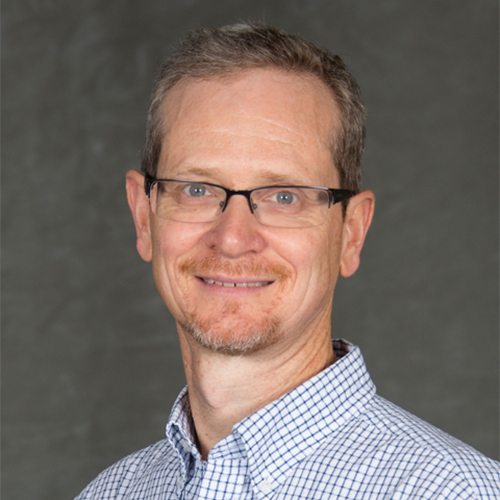Peter Olmsted
Peter Olmsted
Dynamics Core Group Member, LINXS fellow
Peter Olmsted is Joseph Semmes Ives Chair in Physics at Georgetown University, where he joined the Institute for Soft Matter Synthesis and Metrology (ISM2). He is currently the Director of the Institute.
Prof. Olmsted is a Fellow of the Institute of Physics (UK) and the American Physical Society, and he was awarded the British Society of Rheology Annual Award in 2008. His research achievements include models for polymer crystallization at rest and under flow, explanations for shear banding in complex fluids such as polymer and surfactants, and an experimental-computational collaboration that revealed how mechanical force unfolds proteins. His current research is mainly theory and computer simulation, and includes rheology, dynamics and instabilities in soft matter, polymers, lipid membranes, and proteins.
Peter Olmsted received an A.B. in Physics from Cornell (1984); and a PhD in Physics from the University of Illinois at Urbana-Champaign (1991), where he studied the theory of liquid crystal hydrodynamics and non-equilibrium phase transitions. Following post-docs at Exxon, Cambridge, and the University of Michigan, where he worked on a variety of soft matter physics topics (membranes, polymers, biophysics, liquid crystals and liquid crystalline elastomers), he moved to Leeds in 1996 for a University Research Fellowship. He became Professor in 2005, and led the Soft Matter Physics group in Leeds from 2008-2013. In 2014 he moved to Georgetown University in Washington DC, as the Joseph Semmes Ives Chair in Physics, where he joined the new Institute for Soft Matter Synthesis and Metrology (ISM2). He is currently the Director of the Institute.
Olmsted is a Fellow of the Institute of Physics (UK), and a Fellow of the American Physical Society (Division of Polymer Physics), and he was awarded the British Society of Rheology Annual Award in 2008. His research achievements include models for polymer crystallization at rest and under flow, explanations for shear banding in complex fluids such as polymers and surfactants, and an experimental-computational collaboration that revealed how mechanical forces unfold proteins. While in the UK he was in several European Union networks on Soft Matter, and led the EU Integrated Training Network DYNACOP (Dynamics of Architecturally Complex Fluids) from 2008-2012. He is the Secretary/Treasurer of the APS Topical Group on Soft Matter (GSOFT).
Academic background
2014-present Ives Chair in Physics, Department of Physics, Georgetown University.
2005-2013 Professor of Physics, School of Physics and Astronomy, University of Leeds.
2001-2005 Reader in Complex Fluids, School of Physics and Astronomy, University of Leeds.
2001 Lecturer, School of Physics and Astronomy, University of Leeds.
1996-2001 University Research Fellow, School of Physics and Astronomy, University of Leeds.
1995-1996 Post-Doctoral Research Associate, Department of Physics, University of Michigan.
1993-1995 Post-Doctoral Research Associate, Theory of Condensed Matter Group, Cavendish Laboratory, University of Cambridge.
1991-1993 Post-Doctoral Research Associate, Exxon Research and Engineering Company, Annandale, NJ.
1986-1991 Ph.D., Department of Physics, University of Illinois @ Urbana-Champaign, Champaign, IL. Thesis: The effect of shear flow on the isotropic-nematic transition in liquid crystals.
1984-1986 Process Control and Test Engineer, M/A-COM Advanced Semiconductor Operation (GaAs), Lowell, MA.
1984 A.B. (Physics), Cornell University.

